Steinitz and the theory of equilibrium
(Continued from Part 1...) Morphy’s eventual successor, Wilhelm Steinitz, reigned as world champion until 1894, when he was 58. The Prague-born Steinitz managed to retain his superiority for so long because he developed new principles of the middlegame, particularly in closed or semi-closed positions, that only his successor, Emanuel Lasker, and Lasker’s contemporaries fully appreciated. Steinitz said his “modern school” was guided by two premises: first, that the natural outcome of a game is a draw because of the inherent balance between the forces of White and Black and, second, that checkmate is the ultimate but not the first objective of the game.
Steinitz began his career as a tactical, combinational player in the Morphy style. But in his late thirties he developed insight into subtle positional characteristics that take precedence in positions in which the centre is fully or partially blocked by immobile pawns. Steinitz tried to answer the mystery of why some attacks succeed, regardless of how skilful the defender, while others fail, regardless of how talented the attacker. A failed attack, he added, often results in defeat for the attacker, whose forces suddenly become poorly coordinated in the face of a counterattack.
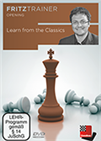 Sagar Shah shows you on this DVD how you can use typical patterns used by the Master of the past in your own games. From opening play to middlegame themes.
Sagar Shah shows you on this DVD how you can use typical patterns used by the Master of the past in your own games. From opening play to middlegame themes. 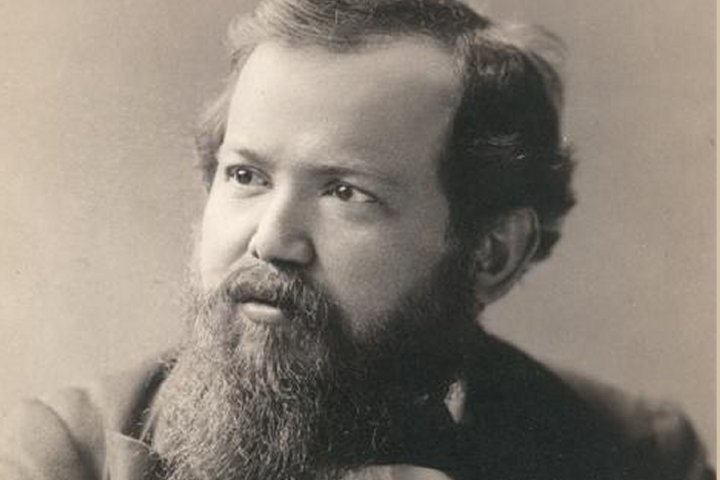
Wilhelm Steinitz | Photo: Austrian National Library
Steinitz concluded that in a typical position each side has certain small advantages which tend to balance one another. For example, a player may have weakened the opponent’s pawns but at the expense of trading a bishop for a slightly less-valuable knight. An attack is justified only when the balance has been upset, either by the player’s mistakes or the opponent’s good moves. Morphy’s advantage in development was one way of upsetting the balance. But by the 1870s, after Morphy’s games became familiar to all masters, it became harder and harder to obtain a lead in development against an unwilling opponent.
 Learn about one of the greatest geniuses in the history of chess! Paul Morphy's career (1837-1884) lasted only a few years and yet he managed to defeat the best chess players of his time.
Learn about one of the greatest geniuses in the history of chess! Paul Morphy's career (1837-1884) lasted only a few years and yet he managed to defeat the best chess players of his time.Steinitz realized that the way to justify a decisive attack in the post-Morphy era was to accumulate small, often subtle, advantages—for example, having two bishops when one’s opponent has two knights, having an entrenched knight at a fortified outpost, or having greater manoeuvring space. In his games Steinitz showed how slow-evolving manoeuvres in the opening, particularly with knights, paid dividends in the middlegame if the centre was closed. He originated the term “hole” to mean a vulnerable square that has lost its pawn protection and can be occupied favourably by an enemy piece.
While a lead in development may be transient, other advantages, such as a superior pawn structure, could be nurtured into the endgame, Steinitz said. Structural weaknesses generally involve pawns that are difficult to defend or squares (especially in the centre or around the king) that enemy pieces can occupy without being dislodged by pawn attacks. The following common pawn weaknesses are disadvantageous in direct proportion to their exploitability, which tends to increase as pieces are exchanged. A pawn with no friendly pawns on adjoining files is called an isolated pawn; isolated pawns may confer middlegame compensation through control of important squares (if located in the centre) or by giving rooks adjoining open files along which to attack. A pawn on an open file whose advance is restrained by an enemy pawn on an adjoining file and that is unguardable by any other pawn is termed a backward pawn. Two pawns that occupy the same file (through captures) are called doubled pawns.
The small advantages could be converted at an appropriate moment to material by means of attack. He added that a player who does not attack when in a position advantageous enough to justify it will lose the advantage. Unlike the Romantics, who relentlessly aimed for the enemy king, Steinitz argued that the nature of the position dictated whether to target the kingside or queenside. The win of a mere pawn was in the large majority of cases fatal among first-class masters.
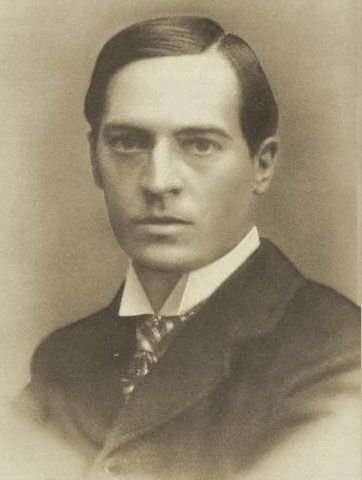 Some subtle advantages do not become significant until the endgame, Steinitz found. For example, after routine pawn captures and recaptures, a player is often left with three pawns each on the kingside and queenside, while the opponent has four on the kingside and two on the queenside. The kingside pawns are often held back near or on their original squares for king protection. But, advancing on the queenside where the player has a majority of the pawns, referred to as a queenside majority, can create a powerful passed pawn that may prove decisive in the late middlegame or endgame. On the other hand, one of Steinitz’s students, Harry Nelson Pillsbury (pictured), popularized the “minority attack,” in which the player with fewer queenside pawns advances them in certain positions in order to weaken his opponent’s pawns.
Some subtle advantages do not become significant until the endgame, Steinitz found. For example, after routine pawn captures and recaptures, a player is often left with three pawns each on the kingside and queenside, while the opponent has four on the kingside and two on the queenside. The kingside pawns are often held back near or on their original squares for king protection. But, advancing on the queenside where the player has a majority of the pawns, referred to as a queenside majority, can create a powerful passed pawn that may prove decisive in the late middlegame or endgame. On the other hand, one of Steinitz’s students, Harry Nelson Pillsbury (pictured), popularized the “minority attack,” in which the player with fewer queenside pawns advances them in certain positions in order to weaken his opponent’s pawns.
Steinitz was also the first master of defensive play. Even when playing the White pieces, he often invited his opponent to open the centre by exchanging pawns or to be the first to cross the fourth rank. He reasoned that such attacks must be premature if the equilibrium was in balance and so could be punished after patient defensive play.
While Philidor was known for his writings and Morphy for his games, Steinitz left a legacy of both. In match play he consistently defeated the leading Romantics—Adolf Anderssen, Joseph Blackburne, Johann Zukertort, and Mikhail Chigorin. He is regarded as the first player to take a scientific approach to chess.
The classical era
 The name Emanuel Lasker will always be linked with his incredible 27 years reign on the throne of world chess. In 1894, at the age of 25, he had already won the world title from Wilhelm Steinitz and his record number of years on the throne did not end till 1921 when Lasker had to accept the superiority of Jose Raul Capablanca. But not only had the only German world champion so far seen off all challengers for many years, he had also won the greatest tournaments of his age, sometimes with an enormous lead. The fascinating question is, how did he manage that?
The name Emanuel Lasker will always be linked with his incredible 27 years reign on the throne of world chess. In 1894, at the age of 25, he had already won the world title from Wilhelm Steinitz and his record number of years on the throne did not end till 1921 when Lasker had to accept the superiority of Jose Raul Capablanca. But not only had the only German world champion so far seen off all challengers for many years, he had also won the greatest tournaments of his age, sometimes with an enormous lead. The fascinating question is, how did he manage that?Among Steinitz’s greatest followers were two Germans, Emanuel Lasker and Siegbert Tarrasch. Lasker dethroned Steinitz as world champion in 1894 and refined his theory of defensive play. He showed that even cramped positions yielded strong counterattacking chances. Also, he was the first player to appreciate the psychological nature of chess and found that, by accepting allegedly bad positions or ones with merely inferior pawn structures, he placed a psychological burden on many of his opponents by encouraging their optimism. His practical approach to the game enabled Lasker to hold the world championship title until 1921. But, as a later world champion, Max Euwe, said of him, “It is not possible to learn much from him; one can only stand and wonder.”
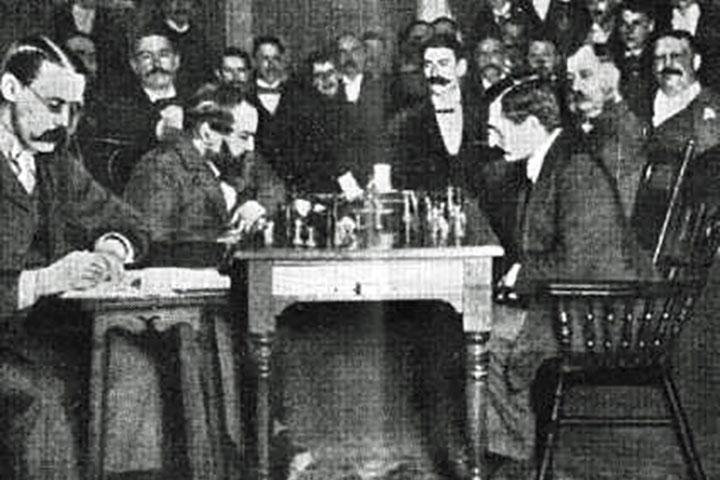
Steinitz vs Lasker, 1894, public domain via Wikimedia Commons
Tarrasch took Steinitz’s principles in a different direction. He regarded the control of space and mobility of pieces as much more important than Steinitz believed and felt that these qualities would compensate for structural pawn weaknesses. He was the champion of a particular pawn structure featuring an isolated d-pawn. Steinitz saw such a pawn as a liability that could be advantageously blockaded by an enemy knight and eventually captured. But Tarrasch noted that the same pawn could support one or two of his own knights on more advanced squares, and this often outweighed the apparent weakness. His games show a relentless effort to get all his pieces on their best squares and to gain control of more space. This led Tarrasch to original attitudes toward material, such as stating that two bishops and a rook were roughly equivalent to two rooks and a knight. He hated the cramped positions that Lasker mastered and relished. Tarrasch preferred to use a superior centre to attack on both wings of the board at the same time. As the world’s foremost chess author for more than three decades, Tarrasch popularized Steinitz’s findings, often by reducing them to simple rules such as “develop knights before bishops” or “don’t move your queen early in the game.”
 He was a child prodigy and he is surrounded by legends. In his best times he was considered to be unbeatable and by many he was reckoned to be the greatest chess talent of all time: Jose Raul Capablanca, born 1888 in Havana.
He was a child prodigy and he is surrounded by legends. In his best times he was considered to be unbeatable and by many he was reckoned to be the greatest chess talent of all time: Jose Raul Capablanca, born 1888 in Havana. Lasker was finally dethroned by Capablanca, who added little that was new to the theory of the game but showed how the teachings of Steinitz and Tarrasch could be molded into a nearly unbeatable formula. Capablanca perfected the skill that players call technique, the nurturing of tiny advantages until they become decisive. Capablanca paid little attention to the opening and played both 1 e4, the favourite of masters until about 1910, and 1 d4, a move more likely to keep the centre closed. He preferred middlegames with clear-cut plans. But he argued that each move, even in the opening, should further that goal—a contrast with Morphy, who appeared to develop pieces for the sake of development.
Capablanca created a style of play that allowed him to minimize risk; he went a record eight years, from 1916 to 1924, without losing a tournament or match game. Other leading players, among them Akiba Rubinstein and Carl Schlechter, developed their own minimum-risk techniques as they tried to perfect the ideas of Steinitz. Material advantage became a high priority. Sacrifices declined in frequency and gambits almost disappeared at the master level. The absence of new ideas in chess was reflected in the appearance of agreed draws in fewer than 20 moves—ironically called “grandmaster draws”—in the first two decades of the 20th century.
Read the full chess article at Britannica.com
Links
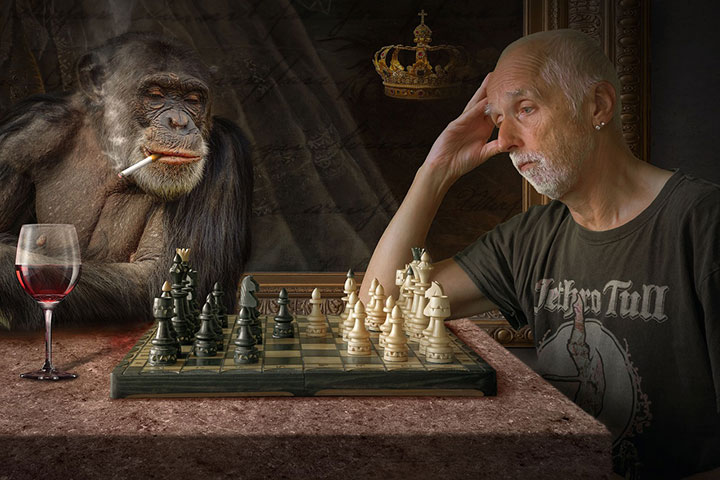


















 Some subtle advantages do not become significant until the endgame, Steinitz found. For example, after routine pawn captures and recaptures, a player is often left with three pawns each on the kingside and queenside, while the opponent has four on the kingside and two on the queenside. The kingside pawns are often held back near or on their original squares for king protection. But, advancing on the queenside where the player has a majority of the pawns, referred to as a queenside majority, can create a powerful passed pawn that may prove decisive in the late middlegame or endgame. On the other hand, one of Steinitz’s students,
Some subtle advantages do not become significant until the endgame, Steinitz found. For example, after routine pawn captures and recaptures, a player is often left with three pawns each on the kingside and queenside, while the opponent has four on the kingside and two on the queenside. The kingside pawns are often held back near or on their original squares for king protection. But, advancing on the queenside where the player has a majority of the pawns, referred to as a queenside majority, can create a powerful passed pawn that may prove decisive in the late middlegame or endgame. On the other hand, one of Steinitz’s students, 





